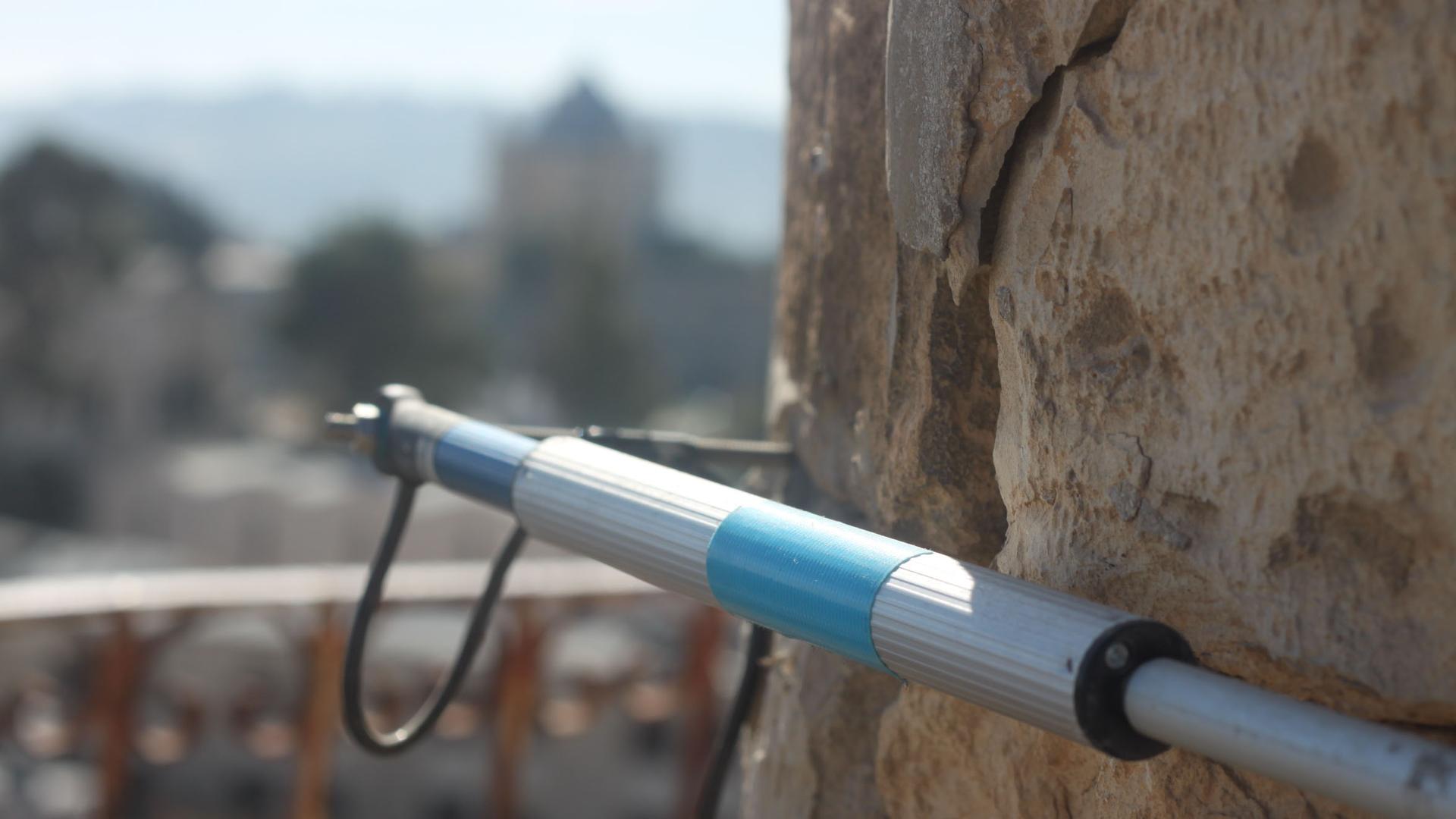Can Israel’s ancient sites survive the next big earthquake?
A seismic monitoring device measures any movement in the crack of the minaret on the Tower of David.
There’s no way to predict exactly when an earthquake will happen, but if you look at history, the Holy Land is about due for a big one.
About once every 100 years, the Holy Land has been shaken by an earthquake of, you could say, biblical proportions. Those 100 years are nearly up.
Israeli officials worry whether ancient treasures and holy sites could face the same biblical fate as the walls of Jericho: could they all “come tumbling down?”
One of those sites is the Tower of David and its minaret, one of the city’s most recognizable symbols. The top of the minaret’s narrow, winding staircase is the highest lookout point in Jerusalem’s Old City, what Eilat Lieber, the director of the Tower of David museum, calls “the most amazing view” of the city.
“You can see the east, the west. This is the point you see all the city together, as one beautiful, important historic city,” Lieber said.
It’s a viewpoint that almost nobody sees, because the 17th century minaret is closed to visitors. The tower has six major cracks in it. In the event of an earthquake, Lieber worries it could collapse.
"This is the symbol of the city, the symbol of Jerusalem, for more than 2,000 years. So that's why this is a real nightmare for us," said Lieber.
Israel sits along the friction point of some of the most active tectonic plates in the world. This October, five minor earthquakes shook Israel, causing little damage but lots of worry. A month later, Israel had Italian experts install a seismic monitoring system here on the Tower of David. It’s the first historical site Israel has outfitted with such technology to analyze how to earthquake-proof the structure.
“You can see here the crack that is split,” said Filippo Lorenzoni, a University of Padova researcher who is helping run the monitors. “I put this sensor just across the crack in order to measure displacement.” The sensor moves back and forth like a bicycle tire pump, measuring how much the crack opens over time.
About every century, a massive quake has killed hundreds of people in the Holy Land and damaged some of the world’s most venerated holy spots. The last major earthquake, in 1927, damaged the Al Aqsa mosque, Islam’s third holiest site, and the Church of the Holy Sepulcher, where tradition holds that Jesus was crucified and buried.
“We have some responsibility not only to preserve the historical monuments of our personal heritage — because this is not only the Holy Land but the Promised Land for us — but also for the rest of the world,” said Avi Shapira, head of Israel’s national steering committee for earthquake preparedness. “Israel is on the right way, the right course to improve the situation, but still there is a long way to go.”
Indeed, a very long way to go. Israeli officials have not publicized their list of the most vulnerable historical sites, and no government authority has come forward yet to take responsibility for earthquake-proofing those sites.
Israeli officials haven’t even inspected some of the area’s most treasured sites. Some of the most fragile ones in Jerusalem are at the center of competing ownership claims, and at the heart of the Mideast conflict. There have been protests when Israel has conducted preparatory repair work near a Muslim holy site.
Geopolitics can rattle this land just as much as an earthquake can.
